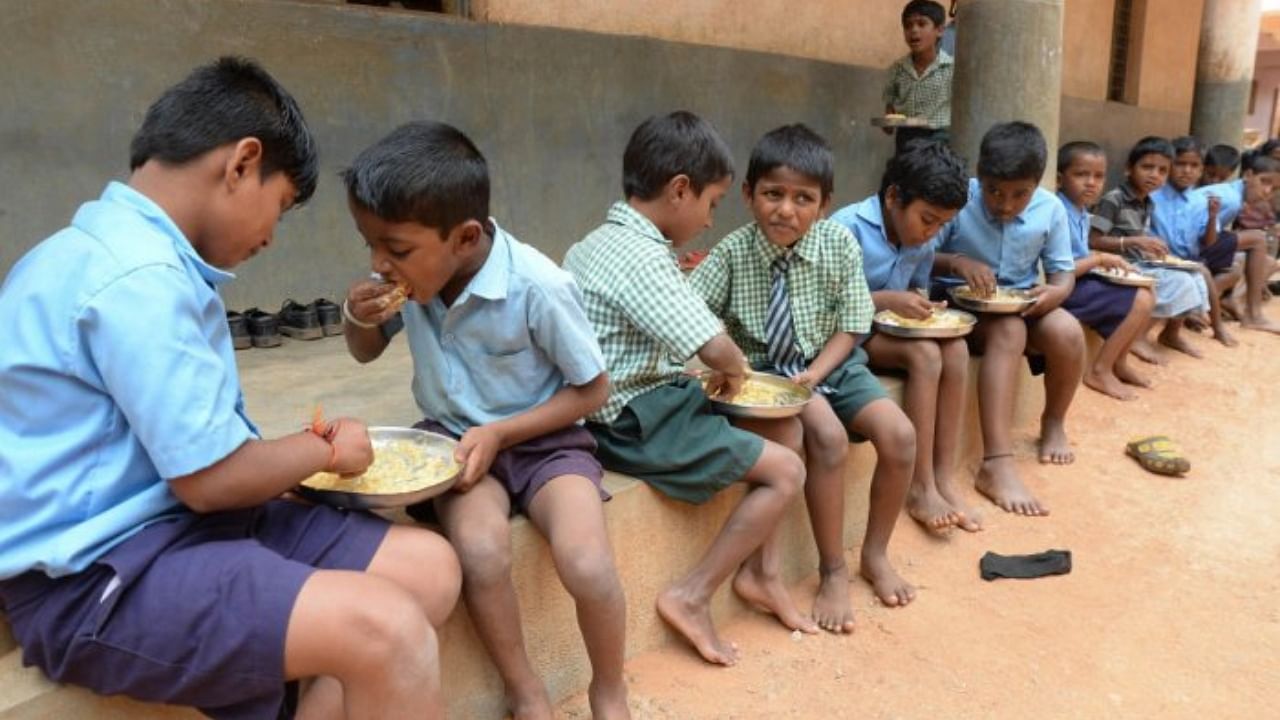
While the government’s supplementary nutrition programmes were disrupted during Covid, the impact was more on schoolgoing children than on those aged below six years, a recent study shows.
The study, by the Centre for Budget and Policy Studies (CBPS) and supported by UNICEF, was conducted in Tumakuru and Yadgir districts between January and September 2022.
The study is based on interviews with government staff and beneficiaries, and analysis of monthly progress reports from anganwadis.
The report says that government schools in both districts stopped the supply of Iron and Folic Acid (IFA) tablets to children during the one-and-half years of school closure.
This could have worsened the already poor iron deficiency anaemia numbers in the state, says the report. In the case of children aged below six years, the Women and Child Development Department quickly switched from hot cooked meals to supplying dry rations starting April 2020 itself, which may have prevented a nutritional disaster in this age group.
For schoolchildren (aged seven years and above), take-home rations were introduced much later, in September 2020, and supply was inconsistent.
In 2 districts
In Tumakuru, these rations were given only once in three months, and in Yadgir, supply was irregular, says the report.
It adds that many parents, especially in Yadgir, reported being unaware or unable to collect rations from schools.
Take-home rations didn’t cover all aspects of nutrition that children used to get pre-Covid either.
For example, there was no attempt to replace milk distribution with an equivalent nutrient source. Milk powder was given only one time in the two years.
The scheme for adolescent girls that gives take-home rations to school dropout adolescent girls was stopped in Tumakuru. The impact of this disruption on children’s nutritional status is not clear as it hasn’t been measured.
But the report points out that Tumakuru and Yadgir generally rank very low in the district nutritional index, with 40.3 per cent and 57.6 per cent of children respectively stunted (not achieving desired height for age), as per the National Family Health Survey-5 of 2019-20.
Covid disruptions may have worsened the scenario in these and other districts.
Though the under-six age group fared better than schoolchildren, they were also affected due to disruption in services like growth monitoring in anganwadis.
Anganwadi reports and official accounts from both districts showed an increase in children with moderate acute malnutrition (MAM) during Covid.
Nutrition expenditure
The report adds that Karnataka’s nutrition expenditure as a proportion of the total expenditure has declined from 4.08 per cent to 3.2 per cent over the past five years (between 2016–17 and 2021–22).